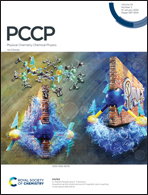Integrating trace amounts of Pd nanoparticles into Mo3N2 nanobelts for an improved hydrogen evolution reaction†
Abstract
Significant efforts have been directed towards the use of transition metal nitrides as electrocatalysts for the hydrogen evolution reaction (HER). Molybdenum nitride, despite its potential for scalable production, suffers from the bottleneck of poor catalytic activity. Furthermore the kinetics of the water dissociation process ought to be improved for enhancing its potential. Here, we report a facile method for the incorporation of a trace amount of Pd nanoparticles into Mo3N2 nanobelts (0.75 Pd/Mo3N2) for an enhanced HER in both acidic and alkaline solutions. When employed for the HER, the 0.75 wt% Pd/Mo3N2 nanobelt delivers excellent catalytic activity with overpotentials of 45 and 65 mV in 0.5 M H2SO4 and 1 M KOH at a current density of 10 mA cm−2. As-prepared 0.75 wt% Pd/Mo3N2 displays a smaller Tafel slope and offers substantial stability in both acidic and alkaline media under the same operating conditions. The improved performance of the as-prepared 0.75 wt% Pd/Mo3N2 points to fast charge transfer, higher electrical conductivity and synergistic effects between Pd and Mo. This work displays a direct method for reducing the use and cost associated with the use of platinum-group metals while also delivering superior HER catalytic performance.



 Please wait while we load your content...
Please wait while we load your content...